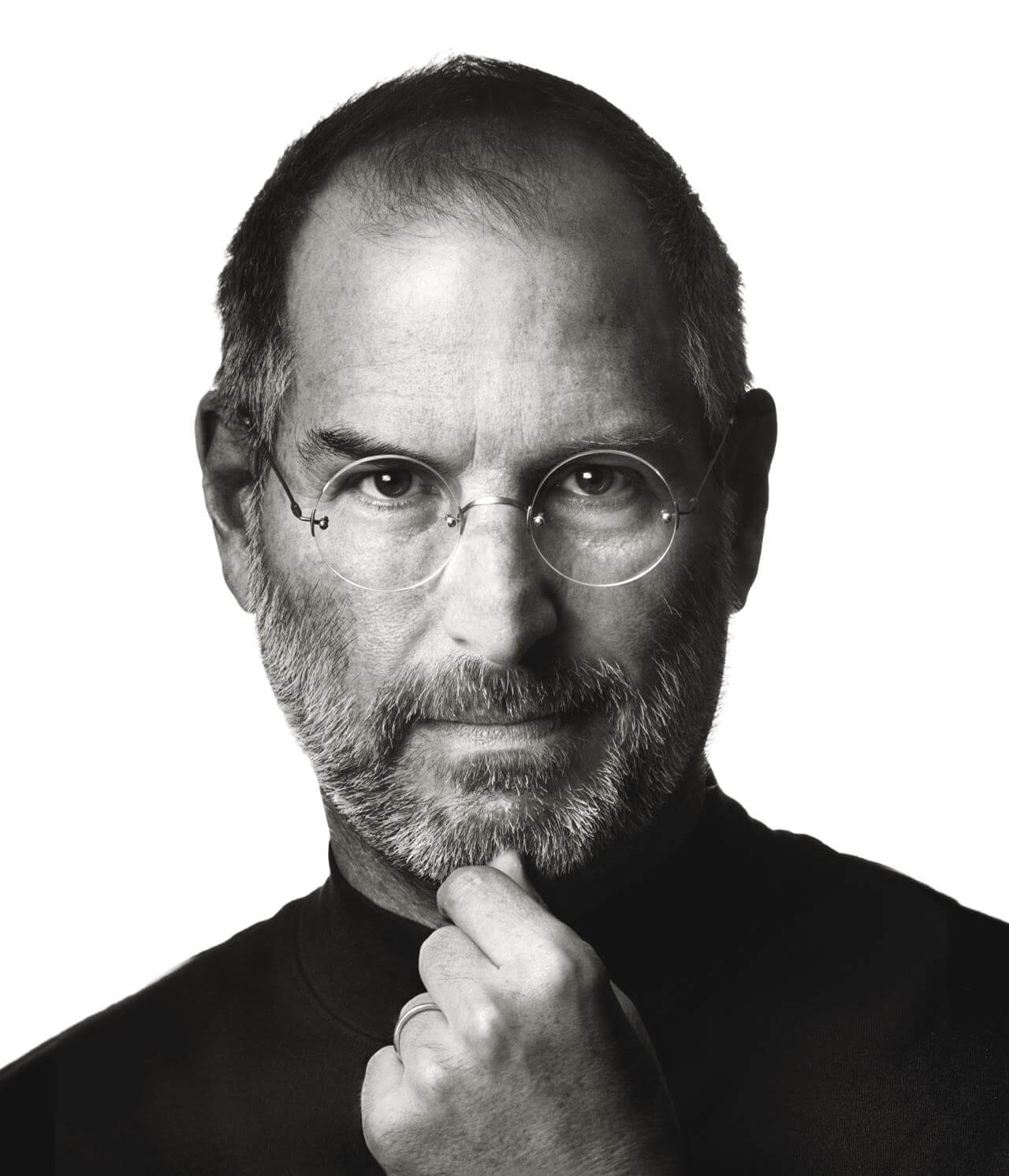In the vast landscape of technological innovation, few stories are as captivating as Apple’s dramatic turnaround under the leadership of Steve Jobs. From the brink of insolvency in the late 1990s to becoming one of the world’s most valuable companies, Apple’s metamorphosis is a testament to visionary leadership, relentless innovation, and masterful branding. This article explores the pivotal strategies and decisions that fueled Apple’s resurgence, highlighting the profound impact of Steve Jobs’ return to the helm.
Marketcap
Active Devices
Revenue in 2022
Full Time Employees
on Reseach & Development
Table of Contents
Introduction
In 1997, Apple Inc. stood at a precarious crossroads. Once a pioneer in personal computing, the company grappled with declining market share, lackluster product lines, and financial losses that threatened its very existence. Competitors like Microsoft dominated the industry, and Apple’s future seemed uncertain at best. The return of Steve Jobs, co-founder and former CEO, marked a turning point that would not only salvage Apple but also reshape the technology sector as a whole.
Steve Jobs’ comeback was more than a change in leadership—it was a revival of Apple’s core ethos of innovation and design excellence. By streamlining the company’s product offerings and introducing groundbreaking devices like the iMac, iPod, iPhone, and iPad, Jobs reignited consumer interest and set new industry standards. This case study examines how visionary leadership and a focus on innovation can dramatically alter a company’s trajectory.
The Prodigal Son Returns: Steve Jobs in 1997
Background and Departure
Steve Jobs co-founded Apple in 1976 alongside Steve Wozniak and Ronald Wayne, introducing revolutionary products like the Apple I and the Macintosh. However, internal conflicts and a power struggle with then-CEO John Sculley led to Jobs’ departure in 1985. During his 12-year absence, Jobs founded NeXT Computer and acquired Pixar AnimationStudios, both instrumental in honing his business acumen and design philosophy.
NeXT Computer, though not a commercial success, was pivotal in developing advanced operating systems and object-oriented programming frameworks. These technologies would later become the foundation for Apple’s macOS and iOS. Meanwhile, Pixar’s success in computer animation, highlighted by the release of “Toy Story” in 1995, showcased Jobs’ ability to identify and nurture innovative ventures.

Apple’s Decline
In Jobs’ absence, Apple struggled with an overextended product line, poor management decisions, and fierce competition. The company lost significant market share, and by 1997, it was on the verge of bankruptcy. Apple’s product offerings had become convoluted, with multiple models causing consumer confusion and diluting the brand’s identity.
The company’s operating system was outdated compared to Microsoft’s Windows 95, and attempts to modernize it, such as the Copland project, failed disastrously. Financial losses mounted, and stock prices plummeted. Industry analysts predicted that Apple would not survive without drastic changes.
The Return and Immediate Actions
Jobs returned to Apple when the company acquired NeXT in 1997 for its advanced operating system. As interim CEO, he swiftly implemented critical changes:
- Leadership Restructuring: Jobs reorganized the executive team, bringing in new talent and removing ineffective managers. He reestablished a culture of accountability and focus, essential for driving innovation.
- Strategic Alliance with Microsoft: He secured a $150 million investment from Microsoft, ensuring continued support for Microsoft Office on Mac and providing much-needed capital. This move was controversial but pragmatic, as it stabilized Apple’s finances and reassured investors.
- Product Line Simplification: Jobs eliminated redundant and unprofitable products, focusing on core offerings that aligned with Apple’s vision. He believed that by saying “no” to a thousand things, the company could concentrate on truly important innovations.
These immediate actions not only stabilized Apple but also set the stage for a remarkable turnaround.
Streamlining for Success: The Product Matrix
The Problem of Complexity
Before Jobs’ return, Apple’s product lineup was convoluted, featuring multiple models with overlapping features that confused consumers and strained company resources. This complexity made it difficult for customers to choose the right product and for Apple to manage production efficiently.
For instance, the company had twelve different versions of the Macintosh computer, each with slight variations but no clear differentiation in the market. This lack of focus diluted marketing efforts and increased production costs.
Implementing the Quadrant Strategy
Jobs introduced the “Product Matrix”, a simplified framework dividing products into four categories based on consumer vs. professional use and desktop vs. portable computing:
- Consumer Desktop: iMac
- Consumer Portable: iBook
- Professional Desktop: Power Macintosh G3
- Professional Portable: PowerBook G3
This strategy allowed Apple to concentrate its resources on developing and refining these key products. By focusing on a limited range of products, Apple could ensure higher quality, better design, and more effective marketing.
Outcomes of Simplification
By narrowing focus to these key areas, Apple achieved:
- Cost Reduction: Lower production and inventory costs due to streamlined manufacturing. Simplified logistics and supply chains led to significant savings.
- Brand Clarity: Enhanced consumer understanding of Apple’s offerings. Customers could easily identify which product suited their needs.
- Quality Improvement: Allocated resources effectively to innovate and improve product quality. Engineers and designers could concentrate on perfecting fewer products.
This strategic simplification was a critical step in repositioning Apple as a leader in innovation and design.
The iMac: A Design Revolution
Reinventing the Personal Computer
In 1998, Apple unveiled the iMac G3, a departure from conventional PC design with its all-in-one form factor and translucent Bondi Blue casing. The iMac combined the monitor and CPU into a single unit, reducing clutter and complexity for the user.
The design was bold and unconventional, breaking away from the beige boxes that dominated the market. The iMac was not just a computer; it was a statement piece that blended technology with art.
Collaboration with Jony Ive
Jobs collaborated closely with Jonathan Ive, Apple’s Chief Design Officer, emphasizing simplicity and aesthetic appeal. Their focus areas included:
- Aesthetics: Creating a visually striking product that stood out in the market. The iMac’s design was inviting and approachable, aiming to demystify technology.
- User Experience: Simplifying setup and operation to make computing accessible. The iMac featured a single cable and plug-and-play functionality, appealing to novices and experts alike.
- Materials and Colors: Experimenting with new materials and introducing vibrant colors. This approach made the iMac not just a tool but also a personal expression.
Innovative Features
- USB Adoption: The iMac was among the first to fully embrace USB ports, facilitating easy peripheral connectivity. This move encouraged the industry to adopt USB as a standard.
- Internet-Ready: Designed for seamless internet connectivity, catering to the burgeoning online audience. The slogan “There’s no step three!” emphasized its ease of use.
- Elimination of Legacy Technologies: Removed floppy drives and serial ports, signaling a bold move towards future standards. This decision was controversial but underscored Apple’s commitment to innovation.
Market Impact
The iMac’s success was immediate, selling over 800,000 units in its first five months. It revitalized Apple’s image and proved that design innovation could drive consumer interest. The iMac became a cultural phenomenon, appearing in movies, TV shows, and advertising, further cementing Apple’s place in popular culture.
The iPod and the Music Industry Transformation
Spotting an Opportunity
Recognizing the limitations of existing MP3 players, Jobs sought to create a device that was both user-friendly and capable of holding an entire music library. The market was fragmented, with devices that were either too bulky or had insufficient storage.
Jobs famously challenged his team to design “a thousand songs in your pocket”. This vision set the stage for the iPod’s development.
The Birth of the iPod
Released in 2001, the iPod featured:
- Massive Storage: Initially offering 5GB, capable of holding 1,000 songs. This was revolutionary at the time, as competitors offered much less capacity.
- Intuitive Interface: The click wheel allowed easy navigation through music collections. The simplicity of use was a key differentiator.
- Sleek Design: A minimalist aesthetic that became a cultural icon. The iPod’s design was elegant and recognizable, with its white earbuds becoming a status symbol.
Integration with iTunes
The launch of iTunes provided a legal and convenient platform for purchasing and organizing music. This ecosystem:
- Combated Piracy: Offered an alternative to illegal downloads, which were rampant with services like Napster.
- Enhanced User Experience: Simplified syncing between devices. Users could easily purchase, organize, and transfer music.
- Industry Collaboration: Apple negotiated with major record labels to offer songs at $0.99, reshaping the music industry’s revenue model.
Impact on Music Consumption
The iPod and iTunes fundamentally changed how people accessed music, leading to the decline of physical media and the rise of digital distribution. By 2008, iTunes became the largest music retailer in the United States.
The iPod’s success extended Apple’s reach beyond computers, establishing the company as a leader in consumer electronics. It also demonstrated the power of integrating hardware, software, and services into a cohesive user experience.
The iPhone: Revolutionizing Communication
A Bold Vision
Steve Jobs introduced the iPhone in 2007 as a device that combined a mobile phone, an iPod, and an internet communicator. He declared that Apple was reinventing the phone, aiming to disrupt an industry dominated by established players like Nokia and BlackBerry.
Groundbreaking Features
- Multi-Touch Interface: Eliminated physical keyboards in favor of a touch screen. This innovation allowed for a larger display and more intuitive interactions.
- App Store Ecosystem: Launched in 2008, enabling developers to create applications, vastly expanding functionality. The App Store revolutionized software distribution and created a new economy for developers.
- Visual Voicemail and Safari Browser: Introduced features that enhanced usability and internet access on mobile devices.
- Design Excellence: The iPhone’s sleek design and premium materials set it apart from other smartphones.
Market Disruption
The iPhone set new standards for smartphones, influencing competitors and altering consumer expectations. It led to:
- Shift in Industry Dynamics: Companies like Google developed Android to compete, and manufacturers rushed to create touch-screen devices.
- Consumer Behavior Change: The iPhone made smartphones mainstream, with users relying on them for communication, entertainment, and productivity.
- Carrier Influence: Apple negotiated unprecedented control over carriers, influencing service plans and revenue sharing.
Economic Impact
By 2010, Apple had sold over 73 million iPhones, significantly contributing to the company’s revenue growth. The iPhone became Apple’s most profitable product, transforming it into a global powerhouse.
The iPad and Expansion of the Ecosystem
Filling a Market Gap
The iPad, launched in 2010, offered a new category of device that was more portable than a laptop but more functional than a smartphone. Jobs described it as a “magical and revolutionary device” for browsing the web, reading, and consuming media.
Adoption Across Sectors
The iPad found applications in:
- Education: Schools adopted iPads for interactive learning and digital textbooks.
- Healthcare: Doctors used iPads for patient records and diagnostic tools.
- Business: Companies utilized iPads for presentations, point-of-sale systems, and mobile workstations.
Impact on Computing
The iPad popularized tablets, influencing competitors to release their own versions. It challenged the notion of traditional computing devices and expanded Apple’s ecosystem further.
Masterful Branding and Marketing
Crafting a Strong Identity
Apple’s branding under Jobs was carefully curated to embody innovation, simplicity, and elegance. The company’s identity was reinforced through consistent messaging and a focus on the user experience.
Iconic Advertising Campaigns
- “Think Different”: Celebrated creativity and non-conformity, associating Apple with visionaries like AlbertEinstein and Mahatma Gandhi.
- Silhouette iPod Ads: Made the iPod instantly recognizable, using vibrant colors and energetic music.
- Product Launch Events: Turned into highly anticipated media spectacles, with Jobs’ charismatic presentations building hype and excitement.
Building Customer Loyalty
Through exceptional product design and customer service, Apple cultivated a dedicated consumer base. Initiatives like the Apple Store provided a direct connection with customers, offering personalized support and an immersive brand experience.
The Essence of Visionary Leadership
Jobs’ Leadership Style
Steve Jobs was known for his intense focus and high standards. His approach included:
- Relentless Pursuit of Perfection: Demanding excellence in all aspects, from product design to packaging.
- Simplification: Stripping away unnecessary complexity to enhance usability and aesthetics.
- Innovation Culture: Encouraging teams to push boundaries and think differently.
- Hands-On Involvement: Jobs was deeply involved in product development, often scrutinizing the smallest details.
Lessons in Leadership
Jobs’ tenure at Apple offers insights into effective leadership:
- Clear Vision: Aligning the organization towards common goals fosters unity and purpose.
- Customer Focus: Prioritizing user experience leads to satisfaction and loyalty.
- Embracing Failure: Viewing setbacks as learning opportunities encourages experimentation.
- Storytelling: Communicating a compelling narrative can inspire employees and customers alike.
Financial Turnaround and Market Leadership
Return to Profitability
Under Jobs, Apple reversed its financial decline:
- 1998: Reported a net income of $309 million, the first profitable year since 1995.
- 2001-2010: Revenue soared from $5.3 billion to $65.2 billion, reflecting successful product launches and market expansion.
- Stock Performance: Apple’s stock price increased exponentially, rewarding investors and solidifying confidence in the company’s direction.
Market Capitalization
By 2011, Apple became the world’s most valuable publicly traded company, surpassing ExxonMobil. This achievement highlighted the growing importance of technology companies in the global economy.
Diversification of Revenue Streams
Apple’s success was not limited to hardware sales. The company generated significant income from:
- Services: Including the App Store, iTunes, and iCloud.
- Accessories: Such as cases, headphones, and docking stations.
- Content Sales: Music, movies, and books through its digital storefronts.
This diversification reduced dependency on any single product and created a sustainable financial model.
Overcoming Challenges and Criticisms
Closed Ecosystem Debate
Apple faced criticism for its closed ecosystem, which some argued limited user choice. Critics contended that Apple’s control over hardware, software, and services stifled competition and innovation from third parties.
However, this approach ensured product integration and security. Apple’s stringent app review process maintained quality and protected users from malicious software.
Labor Practices Concerns
Reports of poor working conditions at supplier factories, particularly in China, prompted Apple to improve oversight and transparency. The company conducted audits, implemented supplier responsibility programs, and joined initiatives to promote fair labor practices.
These efforts aimed to address ethical concerns and demonstrate corporate responsibility.
Market Saturation
As markets matured, Apple diversified into services and wearables to sustain growth. Products like the Apple Watch and AirPods expanded the ecosystem, while services like Apple Music, Apple TV+, and Apple Pay opened new revenue streams.
Apple also invested in research and development for future technologies, such as augmented reality and autonomous vehicles.
Legacy and Continuing Influence
Post-Jobs Era
After Jobs’ death in 2011, Tim Cook became CEO, maintaining Apple’s commitment to innovation. Cook focused on operational efficiency, global expansion, and corporate social responsibility.
Under his leadership, Apple continued to release successful products and entered new markets, such as streaming services and health technology.
Ongoing Innovation
Apple continues to invest in:
- Wearable Technology: The Apple Watch has become a leading product in health and fitness tracking.
- Services: Subscription-based offerings provide steady revenue and deepen customer engagement.
- Environmental Initiatives: Committing to carbon neutrality and sustainable practices.
Industry Influence
Apple’s success has inspired:
- Design Emphasis: Competitors prioritize aesthetics and user experience, recognizing their impact on consumer preferences.
- Integrated Ecosystems: Companies adopt holistic approaches to product ecosystems, understanding the value of seamless integration.
- Focus on Innovation: The tech industry acknowledges the importance of continuous innovation to remain competitive.
Apple’s approach has set benchmarks for quality, design, and customer loyalty that others strive to emulate.
Conclusion
Apple’s transformation under Steve Jobs is a compelling case study in how visionary leadership and innovation can revive a struggling company. By simplifying product lines, prioritizing design, and fostering a culture of excellence, Jobs not only rescued Apple from the brink of failure but also redefined the technology industry.
Key Takeaways:
- Vision Matters: A clear and compelling vision can unify and drive an organization.
- Innovation is Essential: Continuous innovation is crucial for staying relevant.
- Branding and Customer Experience are Critical: Strong branding and a focus on user experience foster customer loyalty.
- Leadership Makes a Difference: Effective leadership can inspire teams to achieve extraordinary results.
Apple’s journey serves as an enduring lesson for businesses aiming to make a significant impact. It demonstrates that with the right leadership and commitment to innovation, a company can overcome formidable challenges and achieve extraordinary success.
Final Thoughts
Steve Jobs once said, “Innovation distinguishes between a leader and a follower.” Apple’s resurgence is a testament to this belief. By daring to think differently and challenging the status quo, Apple didn’t just save itself—it changed the world.
Additional Content to Expand the Article
The Power of Marketing and Consumer Psychology
Creating Desire
Apple’s marketing campaigns didn’t just inform consumers; they created desire. By tapping into emotions and aspirations, Apple positioned its products as lifestyle choices rather than mere gadgets.
- Scarcity and Exclusivity: Limited initial availability and premium pricing created a perception of exclusivity.
- Influencer Adoption: Celebrities and industry leaders using Apple products enhanced their desirability.
- Brand Community: Apple fostered a sense of belonging among its users, turning customers into brand advocates.
Retail Innovation: The Apple Store
In 2001, Apple opened its first retail stores, revolutionizing the way technology products were sold.
- Experience-Centric Design: Stores were designed to be welcoming, with open spaces and hands-on product displays.
- Knowledgeable Staff: Employees were trained to provide expert advice without high-pressure sales tactics.
- Genius Bar: Offered free technical support, enhancing customer satisfaction and loyalty.
The success of Apple Stores demonstrated the value of controlling the retail experience and deepening the connection with customers.
Corporate Culture and Employee Engagement
Fostering Creativity
Apple’s corporate culture under Jobs emphasized innovation and creativity.
- Small Teams: Encouraged agility and quick decision-making.
- Cross-Disciplinary Collaboration: Designers, engineers, and marketers worked closely together.
- Secrecy: While controversial, Apple’s culture of secrecy aimed to prevent leaks and maintain focus.
Talent Acquisition
Attracting and retaining top talent was crucial.
- Challenging Work: Employees were motivated by working on groundbreaking products.
- Mission-Driven: A shared sense of purpose inspired commitment.
- Compensation and Perks: Competitive salaries and benefits helped retain key personnel.
Strategic Use of Technology and Innovation
Research and Development
Apple invested heavily in R&D to stay ahead of competitors.
- Patents and Intellectual Property: Protected innovations and provided a competitive edge.
- Acquisitions: Apple acquired companies to obtain new technologies and talent.
Supply Chain Mastery
Apple’s supply chain efficiency was a significant factor in its success.
- Exclusive Agreements: Secured priority access to components.
- Quality Control: Maintained high standards across the supply chain.
- Cost Management: Leveraged economies of scale to reduce costs without sacrificing quality.
Global Expansion and Market Penetration
International Growth
Apple expanded aggressively into international markets.
- Localization: Tailored products and marketing to suit local cultures and preferences.
- Retail Presence: Opened Apple Stores in major cities worldwide.
- Partnerships: Collaborated with local carriers and distributors.
Emerging Markets
Targeting emerging markets like China and India offered significant growth opportunities.
- Affordable Models: Introduced products like the iPhone SE to appeal to price-sensitive consumers.
- Online Sales: Leveraged e-commerce to reach customers in areas without physical stores.
Corporate Social Responsibility and Sustainability
Environmental Initiatives
Apple committed to reducing its environmental impact.
- Renewable Energy: Aimed to power all facilities with renewable sources.
- Recycling Programs: Implemented programs to recycle old devices responsibly.
- Product Design: Focused on energy efficiency and reduced packaging.
Ethical Sourcing
Addressed concerns over labor practices by:
- Supplier Code of Conduct: Established standards for suppliers.
- Audits and Reporting: Regularly audited suppliers and published reports.
- Community Engagement: Invested in education and development programs in manufacturing regions.
Adapting to Technological Trends
Artificial Intelligence and Machine Learning
Invested in AI for:
- Siri Enhancement: Improving the virtual assistant’s capabilities.
- Personalization: Tailoring user experiences based on behavior.
- Security: Utilizing AI for advanced security features like Face ID.
Augmented Reality (AR)
Developed AR technologies to:
- Enhance Apps: Introduce AR features in apps like Maps and gaming.
- Prepare for Future Devices: Laying the groundwork for potential AR glasses or headsets.
Healthcare Technology
Apple focused on health and wellness through:
- Apple Watch Features: Heart rate monitoring, ECG app, and fitness tracking.
- Health Records: Enabling users to access medical records securely.
- Research Initiatives: Partnering with institutions for health studies.
Challenges Ahead and Future Outlook
Market Competition
Facing stiff competition from:
- Android Devices: Competitors offering similar features at lower prices.
- Emerging Technologies: New entrants in AI, AR, and electric vehicles.
Regulatory Scrutiny
Dealing with increased regulation on:
- Privacy: Navigating laws like GDPR and advocating for user privacy.
- Antitrust Issues: Addressing concerns over monopolistic practices.
Innovation Pressure
The need to:
- Maintain Momentum: Continuously deliver groundbreaking products.
- Diversify: Explore new markets and technologies to sustain growth.
Reflections on Steve Jobs’ Legacy
Influence on Entrepreneurship
Jobs’ approach inspired a generation of entrepreneurs to:
- Embrace Innovation: Prioritize originality over imitation.
- Focus on Design: Recognize the importance of aesthetics in product success.
- Value User Experience: Place the customer at the center of product development.
Cultural Impact
Apple’s products have become integral to modern life, influencing:
- Communication: Changing how people connect and share information.
- Media Consumption: Transforming music, film, and publishing industries.
- Work and Productivity: Enabling new forms of remote work and collaboration.
Conclusion
The story of Apple’s resurgence under Steve Jobs is not just about a company’s financial turnaround; it’s about the power of vision, innovation, and relentless pursuit of excellence. Jobs’ ability to foresee technological trends, coupled with his uncompromising standards, reshaped industries and left an indelible mark on the world.
As Apple continues to evolve, the principles instilled by Jobs remain integral to its identity. The company’s ongoing commitment to innovation, design, and user experience ensures that it remains at the forefront of technology.
For businesses and leaders worldwide, Apple’s journey offers valuable lessons on navigating challenges, inspiring teams, and creating products that resonate deeply with consumers. It’s a testament to what can be achieved when a company dares to think differently.


